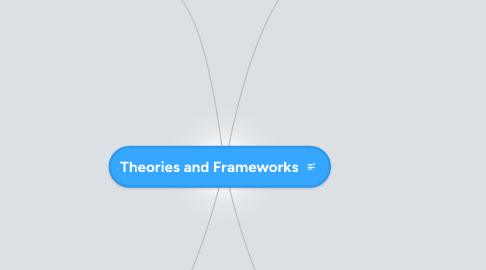
1. LEARNING THEORIES
1.1. Cognitive Load
1.1.1. Three Cognitive Loads:
1.1.1.1. Extraneous: Imposed by manner in which information is presented to learner
1.1.1.2. Germane: Devoted to processing information, creating schemas
1.1.1.3. Intrinsic: Imposed by learning task
1.1.1.3.1. Cannot be modified by instructional design
1.1.2. Two types of Memory:
1.1.2.1. Working Memory
1.1.2.1.1. Vulnerable to overload
1.1.2.1.2. Part of the brain that consciously processes information
1.1.2.1.3. Can only handle about 4 to 5 things at once
1.1.2.2. Long Term Memory
1.1.2.2.1. Essentially unlimited
1.1.2.2.2. Where we store memories
1.1.3. Teachers should be aware of Working Memory overload
1.1.3.1. Complex learning, like driving a car, could result in Working Memory overload
1.2. Constructivist
1.2.1. View of learning based on the belief that knowledge isn't a thing that can be simply given
1.2.2. Things are better understood by active participation
1.2.3. Active construction of meaning rather than passive recipience
1.2.4. Student centered classroom
1.2.4.1. Having a student tutor another student
1.2.4.2. Teachers are just a facilitator
1.3. Connectivism
1.3.1. Learning requires active participation
1.3.2. Learning is done through connection of nodes of information sources
1.3.3. Resides in non-human appliances
1.3.3.1. ex. Computers/Internet
1.3.4. Knowledge rests in diversity of opinions
2. TECHNOLOGY THEORIES
2.1. SCOT
2.1.1. Social Construction of Technology
2.1.2. "Technology DOES NOT determine Human action"
2.1.3. Formalizes the steps and principles to follow when one wants to analyze the causes of technological failures or successes
2.2. Media Ecology
2.2.1. "Technology DOES determine Human action"
2.2.2. Media Ecology Association
2.2.3. Basically, the opposite of SCOT
2.2.4. Assumptions of Media Ecology Theory
2.2.4.1. Media infuses every act and action in society.
2.2.4.2. Media fixes our perceptions and organizes our experiences.
2.2.4.3. Media ties the world together.
3. TPACK
3.1. There are three different but interconnected knowledge bases for Teaching
3.1.1. Pedagogy
3.1.1.1. Effective ways of communicating and teaching in a specific course
3.1.2. Technology
3.1.2.1. Use of technology within a course
3.1.3. Content Knowledge
3.1.3.1. Knowledge of actual content in the course
3.2. TPACK itself is the centre of it all; where all three techniques intersect* and create an essentially perfect learning environment
3.2.1. *Here is a link to what that intersect looks like, illustrated by a Venn Diagram
3.3. Basically, TPACK is a skill set that teachers need to build on in order to create a learning environment that works for the average student of today
4. Philosophy of Teachnology
4.1. A personal Philosophy of how a teacher implements Technology in their classroom, hence "Teach"nology.
4.2. It can be written out into a statement on how a teacher applies technology
4.3. Draw on personal and educational experiences
4.3.1. Say for example someone who has had a bad experience with technology could implement it less in their classroom, directly affecting their teachnology philosophy
